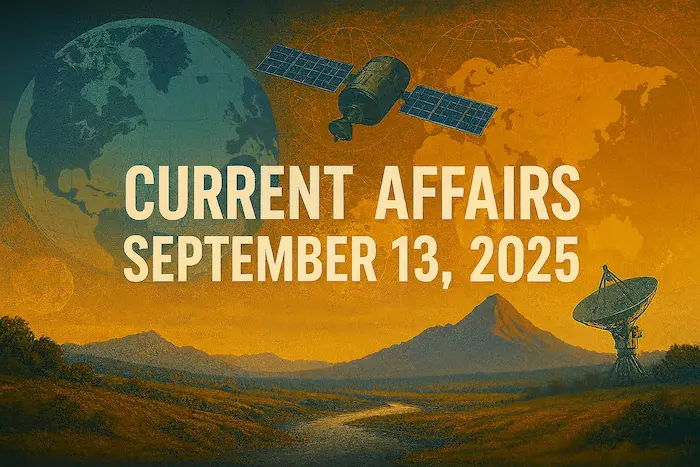1. Vultures and Public Health: Their Role in Preventing Future Pandemics – Environment
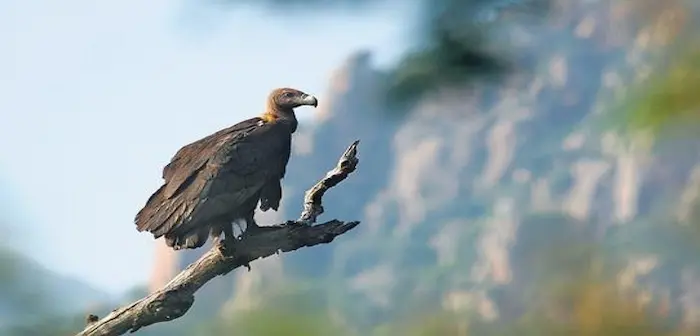
Why in News?
Vultures, often overlooked in public health discussions, play a critical role in disease control in South Asia, particularly India. With rapidly declining populations, experts warn that this could increase the risk of zoonotic disease outbreaks, potentially leading to future pandemics.
Key Takeaways
Vultures as Nature’s Sanitation Workers
- Vultures are scavengers that consume animal carcasses rapidly.
- By removing decaying organic matter, they prevent the spread of zoonotic diseases such as anthrax, rabies, and brucellosis.
- Their digestive systems are uniquely adapted to neutralize harmful pathogens that would otherwise linger in the environment.
Declining Vulture Population in India
- India had over 40 million vultures in the 1980s.
- Their population has declined by more than 95% since the 1990s.
- The veterinary drug Diclofenac, used to treat livestock, is toxic to vultures and is the primary cause of this decline.
- Despite a ban on Diclofenac in 2006 for veterinary use, illegal use continues.
Public Health Implications
- The absence of vultures has led to a rise in feral dog populations, which scavenge on dead animals and are vectors of rabies.
- Poor carcass disposal increases the risk of pathogen spillover from animals to humans—a root cause of pandemics.
Central Asian Flyway (CAF)
- The CAF is a major migratory route that connects Central Asia and South Asia.
- It not only links vulture populations but also ecosystems and disease surveillance systems.
- Conservation in one country impacts regional ecological and health security.
Conservation and Future Strategy
- Current efforts are fragmented and underfunded.
- New Post-2025 Strategy aims to:
- Integrate wildlife, livestock, and public health data.
- Encourage cross-sector collaboration between environment and health ministries.
- Empower local communities for vulture monitoring and carcass management.
- India can become a global leader in One Health by showing how biodiversity conservation supports public health.
Exam Connect – Possible Questions
Prelims
1. Which of the following is the primary cause of the drastic decline in vulture populations in India?
A. Climate change
B. Habitat destruction
C. Use of Diclofenac in veterinary medicine
D. Hunting for traditional medicine
Answer: C. Use of Diclofenac in veterinary medicine
2. The Central Asian Flyway (CAF) is significant because:
A. It is used for transport of livestock between Central and South Asia
B. It is a trade route for medicinal herbs
C. It is a migratory path for birds, linking biodiversity and public health across regions
D. It connects India’s coastline to Central Asian markets
Answer: C. It is a migratory path for birds, linking biodiversity and public health across regions
Mains
1. “Vultures are more than scavengers; they are a public health asset.” Discuss the ecological and public health significance of vultures in the context of India’s pandemic preparedness.
2. Discuss the role of cross-sectoral collaboration in wildlife conservation with special reference to the upcoming Post-2025 Vulture Conservation Strategy in India.
2. India–Mauritius Ties: From Partnership to Family – International Relations
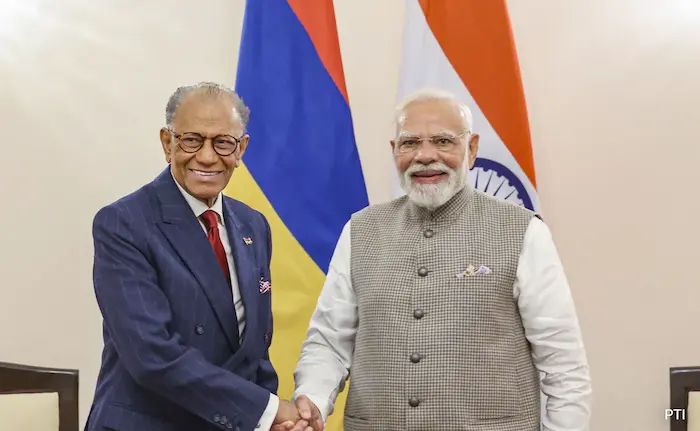
Why in News?
India has announced a $680 million economic package to boost bilateral cooperation with Mauritius in sectors such as infrastructure, healthcare, defense, and maritime security. This announcement followed the meeting between Prime Minister Narendra Modi and Mauritian PM Navinchandra Ramgoolam in Varanasi, reflecting the transformation of ties from a strategic partnership to a familial bond.
Key Takeaways
Economic and Strategic Partnership
- The $680 million aid package signals India’s growing role as a development partner in the Indian Ocean Region (IOR).
- Focus areas include healthcare infrastructure, digital payments, capacity building, and defense cooperation.
Soft Power and Development Diplomacy
- Academic collaborations with institutions like IIT Madras and IIPM to improve higher education and plantation research in Mauritius.
- Implementation of Mission Karmayogi modules for training Mauritian civil servants promotes governance and administrative reforms.
Healthcare Cooperation
- Planned establishment of:
- A 500-bed national hospital
- An AYUSH Centre of Excellence
- A Veterinary School
- These projects reflect India’s commitment to holistic healthcare diplomacy in the Global South.
Digital and Financial Connectivity
- Expansion of UPI and RuPay services to Mauritius.
- Discussions on trade in local currencies align with India’s push for de-dollarization and increased regional financial autonomy.
Maritime and Strategic Cooperation
- A Hydrography Agreement will enable joint maritime surveys and enhance India’s maritime influence in the IOR.
- India will help Mauritius chart its EEZ (Exclusive Economic Zone) over the next 5 years—crucial for security and resource management.
Geopolitical Leverage – Chagos Archipelago
- India has reaffirmed support for Mauritius’s sovereignty over Chagos Archipelago, aligning with its anti-colonial foreign policy.
- This move enhances India’s credibility in the Global South and builds strategic goodwill.
Cultural and Diaspora Connect
- India and Mauritius share deep-rooted historical and cultural ties, with a large Indian diaspora in Mauritius.
- PM Modi’s reference to Mauritius as “family” underscores the people-to-people dimension of the relationship.
Contextual Significance
- Indo-Pacific Strategy: Mauritius is a key maritime node in the Indian Ocean, vital to India’s Security and Growth for All in the Region (SAGAR) doctrine.
- Neighbourhood First Policy: The deepening of India-Mauritius ties is a testament to India’s proactive engagement with its maritime neighbours.
- China Factor: India’s enhanced role in Mauritius counters China’s expanding presence in the Western Indian Ocean.
Exam Connect – Possible Questions
Prelims
1. Which of the following statements about the recent India–Mauritius cooperation is/are correct?
1. India will help Mauritius develop a 500-bed national hospital.
2. The countries have signed a hydrography agreement for joint maritime surveys.
3. Mauritius has introduced India’s GST model in its taxation system.
A. 1 and 2 only
B. 2 and 3 only
C. 1 and 3 only
D. All of the above
Answer: A. 1 and 2 only
2. The Chagos Archipelago, recently in news in the context of India–Mauritius ties, is located in:
A. Arabian Sea
B. South China Sea
C. Bay of Bengal
D. Indian Ocean
Answer: D. Indian Ocean
Mains
1.“India–Mauritius relations have evolved from strategic cooperation to comprehensive partnership.” Discuss the multidimensional nature of India–Mauritius relations in light of recent developments.
2. Examine the role of India’s soft power tools such as education, healthcare, and digital infrastructure in strengthening ties with Small Island Developing States (SIDS), with special reference to Mauritius.
3. Swami Vivekananda and Vedanta Philosophy – History & Culture
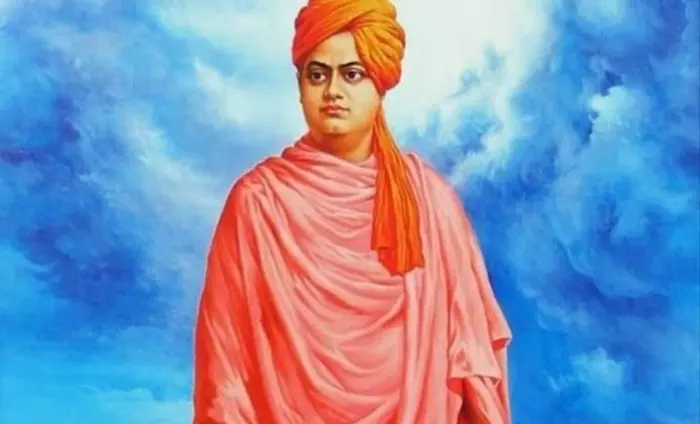
Why in News?
India commemorated the 132nd anniversary of Swami Vivekananda’s iconic address at the Parliament of the World’s Religions in Chicago (1893). His speech brought Indian spirituality and the Vedanta philosophy to global prominence, emphasizing universal brotherhood, religious harmony, and cultural pride.
Key Takeaways
Who was Swami Vivekananda?
- Born as Narendranath Datta in 1863 in Kolkata.
- Disciple of Ramakrishna Paramahamsa.
- Founded the Ramakrishna Mission in 1897 to serve society through spiritual principles.
- His message combined Hindu philosophy with practical action—bridging spirituality and social reform.
Parliament of Religions, 1893 – Chicago
- Swami Vivekananda addressed the gathering as a representative of Hinduism.
- Opened with: “Sisters and brothers of America”, receiving a standing ovation.
- Advocated for:
- Religious tolerance
- Universal acceptance
- Unity of all faiths
Vedanta Philosophy – Core Ideas
- Rooted in the Upanishads, especially Advaita Vedanta (non-dualism).
- Brahman is the ultimate reality; all living beings are manifestations of this One universal spirit.
- Self-Realization is the ultimate goal—recognizing one’s inherent divinity.
- Religious Pluralism: All religions are valid paths to the same truth.
- Karma Yoga: Service to others is service to God — encapsulated in “Jiva is Shiva.”
Practical Vedanta
- Spirituality should not be limited to rituals or renunciation.
- Emphasis on:
- Social reform
- Education
- National regeneration
- Equality and empowerment
- Vivekananda urged the youth to build a strong, spiritually awakened India.
Global Legacy
- Inspired the creation of Vedanta Societies in the U.S. and Europe.
- Promoted Yoga and meditation in the West.
- Became a symbol of the Indian Renaissance, igniting the freedom struggle and cultural confidence.
Cultural Significance
- Swami Vivekananda’s work revived Hindu philosophical traditions while promoting modern thinking.
- His message empowered a generation of freedom fighters, educators, and reformers.
- Relevance today in interfaith dialogue, spiritual well-being, and national integration.
Exam Connect – Possible Questions
Prelims
1. Which of the following philosophies is primarily associated with Swami Vivekananda?
A. Dvaita Vedanta
B. Advaita Vedanta
C. Vishishtadvaita
D. Charvaka
Answer: B. Advaita Vedanta
2. The phrase “Jiva is Shiva,” often associated with Swami Vivekananda, reflects the principle of:
A. Bhakti Yoga
B. Karma Yoga
C. Jnana Yoga
D. Raja Yoga
Answer: B. Karma Yoga
Mains
1. “Swami Vivekananda’s message was not just spiritual, but profoundly social and political.”
Discuss how his interpretation of Vedanta contributed to India’s social reform and national awakening.
2. Examine the significance of Swami Vivekananda’s 1893 Chicago address in shaping global perceptions of Indian spirituality and promoting religious pluralism.
4. India–Pakistan Ties Through the Prism of the Indus Waters Treaty – International Relations
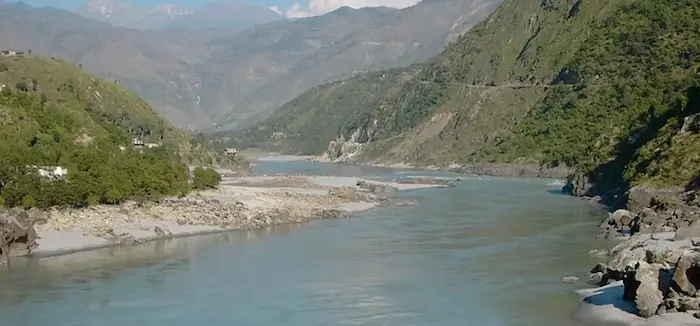
Why in News?
India has suspended the Indus Waters Treaty (IWT)—a water-sharing agreement with Pakistan dating back to 1960—following the Pahalgam terror attack (April 2025). India is now advocating for a review and renegotiation of the treaty, arguing that water-sharing is now as contentious as issues like terrorism and Kashmir in bilateral relations.
Key Takeaways
What is the Indus Waters Treaty (IWT)?
- Signed in 1960, brokered by the World Bank.
- Governs water sharing of six rivers in the Indus River system:
- Eastern Rivers: Beas, Ravi, Sutlej – allocated to India.
- Western Rivers: Indus, Jhelum, Chenab – largely allocated to Pakistan, though India retains limited rights (non-consumptive use, agriculture, hydroelectricity without storage).
- India’s then PM Nehru viewed the treaty as a gesture for peaceful coexistence.
- The Treaty has survived four wars and numerous crises—rare for any bilateral agreement.
India’s Grievances
- 80% of water allocated to Pakistan, despite India being the upper riparian (upstream).
- The Treaty limits India’s development rights in Jammu & Kashmir and Ladakh, even for run-of-the-river hydropower projects.
- Pakistan frequently invokes dispute mechanisms under the Treaty to delay or block Indian projects, such as:
- Baglihar Dam
- Kishanganga Hydroelectric Project
Pakistan’s Position
- Views the Treaty as a strategic lifeline, especially for Punjab and Sindh, where agriculture is heavily dependent on the Indus.
- Resistant to any renegotiation out of fear that changes would diminish its control and bargaining power, particularly regarding Kashmir.
- Connects water security to geopolitical tensions, often using it as a pressure point in international forums.
Geopolitical and Strategic Dimensions
- India’s suspension of the Treaty signals a tactical shift—leveraging water as a geostrategic tool, especially in the context of cross-border terrorism.
- Reopening the Treaty could reshape South Asian water diplomacy.
- There are growing concerns over climate change, glacial melt, and water stress, making IWT renegotiation more relevant.
Legal & Diplomatic Aspects
- The Treaty does not contain a termination clause, but India can choose to unilaterally withdraw under Vienna Convention on the Law of Treaties (1969) citing “material breach.”
- However, such a move could impact India’s image as a responsible upper riparian and regional leader.
Exam Connect – Possible Questions
Prelims
1. Which of the following rivers is not covered under the Indus Waters Treaty?
A. Chenab
B. Beas
C. Sutlej
D. Yamuna
Answer: D. Yamuna
2. Who brokered the Indus Waters Treaty between India and Pakistan in 1960?
A. United Nations
B. World Bank
C. SAARC
D. International Water Association
Answer: B. World Bank
Mains
1.”The Indus Waters Treaty has endured wars but is now strained by water nationalism and terrorism.” Critically analyze the evolving role of the IWT in India–Pakistan relations in the 21st century.
2. Discuss the strategic implications of India being the upper riparian in the Indus river system. How should India balance national interest with international water diplomacy?
5. BS-VII Emission Norms: India’s Next Leap in Pollution Control – Environment
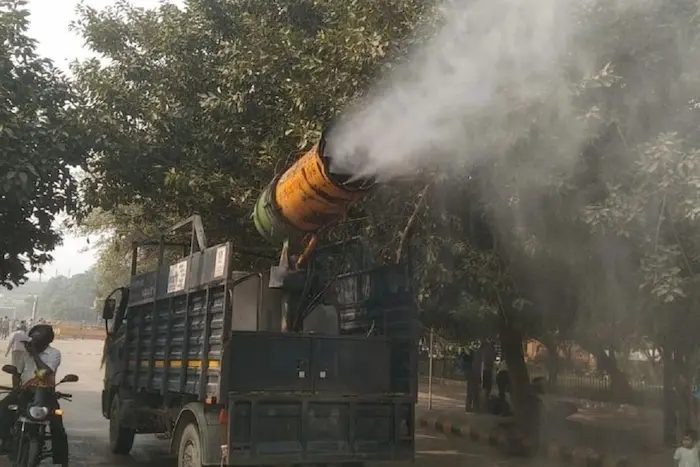
Why in News?
The Government of India is planning to implement BS-VII emission norms by 2026–27 to reduce vehicular pollution and bring the country’s automotive standards in line with global benchmarks, especially the Euro 7 standards.
Key Takeaways
What are BS (Bharat Stage) Emission Norms?
- Bharat Stage (BS) norms are vehicle emission standards instituted by the Government of India to regulate the output of air pollutants from internal combustion engines.
- Modelled after European emission standards (Euro norms).
- Enforced by the Central Pollution Control Board (CPCB) under the Ministry of Environment, Forest and Climate Change.
BS-VII = India’s Euro 7
- BS-VII norms will be India’s version of Euro 7, and are a major upgrade over the current BS-VI norms.
- Will apply uniformly across petrol, diesel, hybrid, and electric vehicles.
What’s New in BS-VII Norms?
| Parameter | BS-VI | BS-VII |
|---|---|---|
| Monitoring System | On-Board Diagnostics (OBD) | On-Board Monitoring (OBM) – real-time |
| NOx Emission Limits | Petrol – 60 mg/km, Diesel – 80 mg/km | Uniform 60 mg/km for all fuel types |
| Non-Exhaust Emissions | Not regulated | Includes brake dust & tyre wear |
| EV Regulations | Not included | Battery safety, durability standards |
| Test Conditions | Lab-based test cycles | Real-World Driving Emissions (RDE) |
| Emission Control Technology | Limited | High-tech, AI-based sensors and filters |
| Anti-Tampering Mechanisms | Limited | Advanced digital safeguards |
New Components Introduced in BS-VII
1. On-Board Monitoring (OBM):
- Replaces OBD.
- Real-time tracking of key pollutants like NOx, ammonia, particulate matter.
- Vehicles will alert users and regulators about emission breaches instantly.
2. Non-Exhaust Emission Regulation:
- For the first time, pollutants from brake pads and tyre microplastics will be regulated.
- Aimed at urban air quality improvement.
3. EV Battery Standards:
- BS-VII will include rules for battery safety, durability, and life cycle in electric vehicles.
- Reduces fire risk, boosts consumer confidence, and ensures sustainable battery material usage.
4. Digital Safeguards Against Tampering:
- New systems will prevent disabling of emission-control units.
- Ensures compliance enforcement across the vehicle’s lifespan.
Why BS-VII Matters
- India has some of the most polluted cities globally; transport is a key contributor.
- BS-VII aligns India with international best practices, improving public health, reducing GHG emissions, and encouraging cleaner technologies.
- Pushes the auto sector toward innovation and electrification.
Challenges Ahead
- Cost Increase: Compliance may raise vehicle prices, impacting affordability.
- Phase-out of Older Models: Smaller or older vehicle models may be discontinued.
- Infrastructure Readiness: Real-world emission testing and data systems need significant investment.
- Industry Pushback: Auto manufacturers may resist tight timelines due to R&D and cost constraints.
Exam Connect – Possible Questions
Prelims
1. Which of the following pollutants will be regulated for the first time under BS-VII norms in India?
A. Carbon Monoxide
B. Tyre wear microplastics
C. Sulphur Dioxide
D. Methane
Answer: B. Tyre wear microplastics
2. What is the main difference between On-Board Diagnostics (OBD) and On-Board Monitoring (OBM)?
A. OBD is used in aircraft; OBM is used in cars
B. OBM monitors emissions in real-time; OBD checks engine faults
C. OBM only tracks fuel efficiency
D. OBD measures road conditions; OBM tracks tire pressure
Answer: B. OBM monitors emissions in real-time; OBD checks engine faults
Mains
1. “The BS-VII emission norms mark a paradigm shift in India’s vehicular pollution strategy.” Examine the major features of BS-VII and their potential environmental and economic impacts.
2. Discuss the challenges and opportunities of implementing BS-VII emission standards in India’s automobile sector, particularly in the context of sustainable urban mobility.
6. The Great Nicobar Island Project: Strategic and National Importance – Defence & Security
Why in News?
The Great Nicobar Island Project, spearheaded by the Narendra Modi government, is a landmark infrastructure and security initiative in the Indian Ocean Region (IOR). It aims to transform the island into a major maritime and air connectivity hub, with strategic and economic objectives. However, it also faces criticism over ecological sensitivity and tribal rights.
Key Takeaways
Project Components
- International Container Transhipment Terminal (ICTT): Aimed at reducing India’s dependence on foreign transhipment hubs (e.g., Colombo, Singapore).
- Greenfield International Airport: Boosts regional connectivity and potential military dual-use.
- Power Infrastructure: Gas and solar-based power plants for sustainable energy supply.
- Planned Township: To accommodate ~1 lakh people, including logistics personnel and strategic installations.
Strategic Importance
Location Advantage
- The island is located near the southern tip of the Andaman & Nicobar chain, close to the Malacca Strait—a key global chokepoint through which 30% of world trade passes.
- The project enhances India’s maritime domain awareness and strengthens the Navy’s presence in the Eastern Indian Ocean.
Counter to China’s Maritime Expansion
- Serves as a counterweight to China’s String of Pearls strategy and its influence via ports like Gwadar and Hambantota.
- Strengthens India’s Indo-Pacific strategy and aligns with its Act East Policy.
Environmental & Social Considerations
Ecological Sensitivity
- Great Nicobar is a biodiversity hotspot, home to:
- Leatherback turtles (endangered)
- Coral reefs
- Unique flora and fauna
- A detailed Environmental Impact Assessment (EIA) and Environmental Management Plan (EMP) have been mandated.
Tribal Rights
- Home to Nicobarese and Shompen tribes (PVTGs – Particularly Vulnerable Tribal Groups).Project promises:
- No displacement of tribal populations
- Protection of traditional livelihoods and cultural practices
- Special welfare and conservation fund allocations
Balancing Development and Conservation
- Government claims to limit ecological footprint and ensure long-term planning.
- Critics argue that even with safeguards, the project poses a risk of irreversible damage to a fragile island ecosystem.
National Security and Economic Integration
- Strengthens logistics and supply chains for India’s eastern seaboard.
- Enhances disaster response capabilities in the Bay of Bengal.
- Contributes to India’s ambition of being a net security provider in the Indo-Pacific.
Exam Connect – Possible Questions
Prelims
1. The Great Nicobar Island is strategically important due to its proximity to:
A. Suez Canal
B. Gulf of Aden
C. Strait of Hormuz
D. Strait of Malacca
Answer: D. Strait of Malacca
2. The Shompen and Nicobarese tribes, often in news regarding developmental projects, are classified as:
A. Scheduled Tribes (STs)
B. Scheduled Castes (SCs)
C. Particularly Vulnerable Tribal Groups (PVTGs)
D. Other Backward Classes (OBCs)
Answer: C. Particularly Vulnerable Tribal Groups (PVTGs)
Mains
1. “The Great Nicobar Island Project seeks to harmonize India’s economic and strategic objectives with environmental and tribal concerns.” Discuss the potential of the project and the challenges it faces.
2. Critically analyze the environmental and strategic dimensions of developing island territories for national security. How can India ensure sustainable development in ecologically fragile zones?

